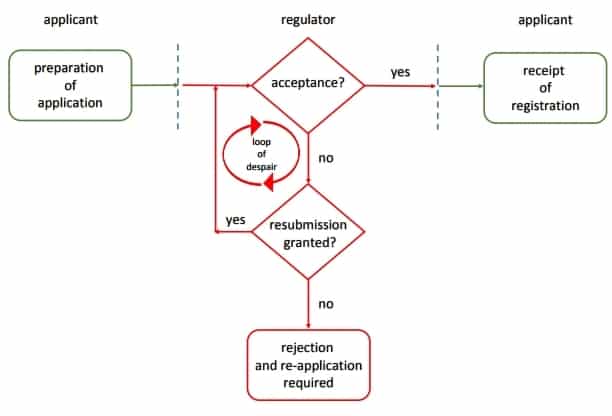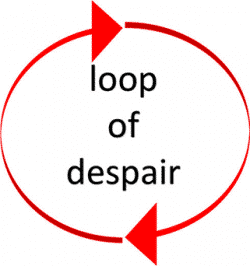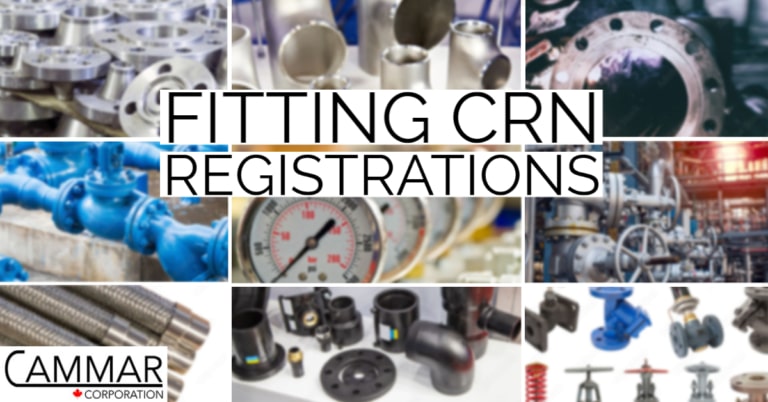From my years worked at ABSA as a Safety Codes Officer, together with my engineering experience in industry and now at Cammar Corporation, I have a very good idea about what the CRN number registration process problems are, including its pitfalls. I’ve evaluated and pointed out in detail the deficiencies for thousands of designs needing CRN number registrations. Some designs were good, and some were – well, let’s just say that they needed improvements and more revisions than others.
The CRN Registration Process
The generalized CRN number registration process is sketched below for reference. Note the loop of despair.

Regulator’s Role
During a review, the regulator decides whether to accept and register a design in accordance with provincial legislation, with a focus on safety and technical aspects. They should be satisfied that the design meets the requirements of the legislation and is designed in a manner that protects the public, before it is registered. The regulator can consider whatever design information it wants to for it to reasonably decide that a design is safe, but what it considers (or doesn’t consider) is up to them. They do not approve any designs, and instead accept or reject them. They are not the owners of designs and are not responsible for them.
If a regulator determines that a design application is deficient in some way, is not safe or does not meet the adopted codes etc, the design application can be put on hold awaiting a revision or can be rejected, at the regulator’s discretion. If put on hold, then it enters what we call the dreaded loop of despair and, unless the required revision is provided, the application will remain there until rejected or withdrawn.
Hopefully regulators will continue to proactively review applications as thoroughly as possible and continue with detailed design evaluations. But given the somewhat recently published statistics (see below), the temptation and pressure to fast track the process by eliminating proactive independent third party reviews must be high. Succumbing to that pressure and temptation would be, in Cammar’s opinion, a mistake and a race downhill that nobody, including the public, would win.
Dreaded Loop of Despair
How many applications enter the dreaded loop of despair? Well, published numbers are scant but ABSA alone reported that in 2014, of the more than the 10000 applications it received that year, more than 50% were deficient (see page 2 of Volume 20 Issue 1: ABSA article) and could not be accepted without a resubmission. This is quite shocking and means that during that year more than 5000 applications either went into the loop of despair and required a revision of some kind, or were rejected or withdrawn.
If a purchase order is cancelled or if production is delayed due to the loop of despair, then associated costs to industry can obviously be large. But they would potentially be even larger with the use of unsafe or illegal equipment, so it’s good that the bad applications were caught. Registering applications without detailed third party evaluation and instead conducting audits after registration and sale or installation etc would be, in our opinion, fraught with risks for manufacturers, end users, and the public. If a deficient product is mistakenly registered and installed, what then? Recalling a product after installation would certainly cost far more than fixing it on the shop floor before any sale. And how much reactive auditing after registration would ensure the same level of safety as proactive reviews?
Avoiding the Loop of Despair
Avoiding the loop of despair while maintaining a high level of quality is, in Cammar’s opinion, key to public safety. Strategies for this will be discussed in the next blog article. Stay tuned.




